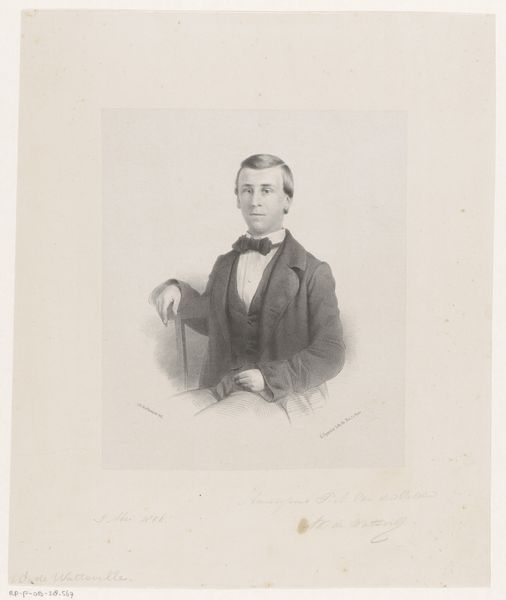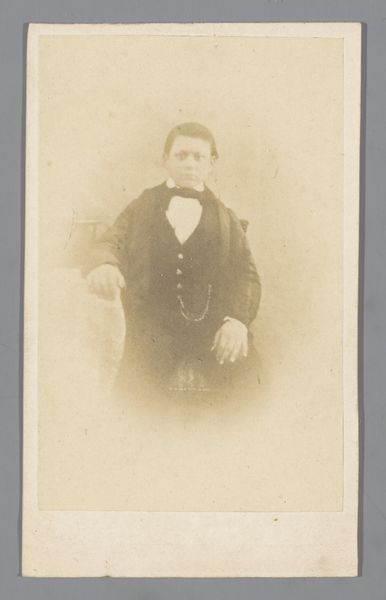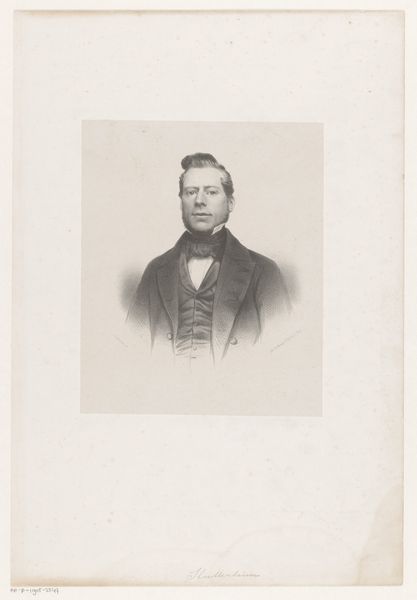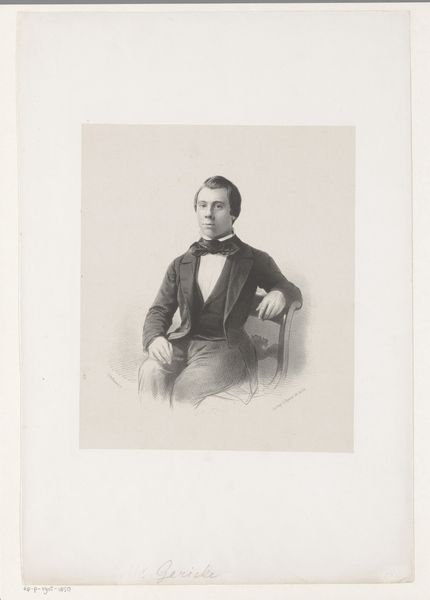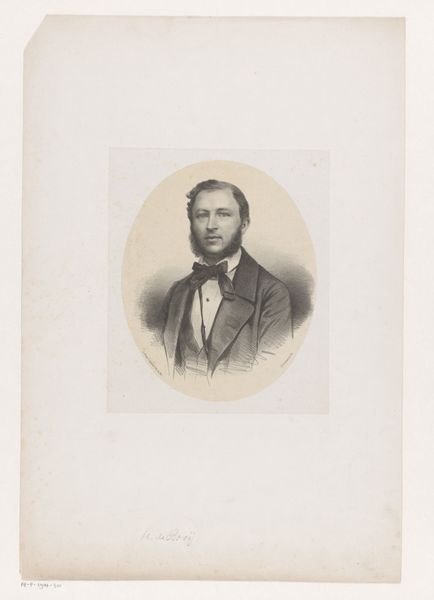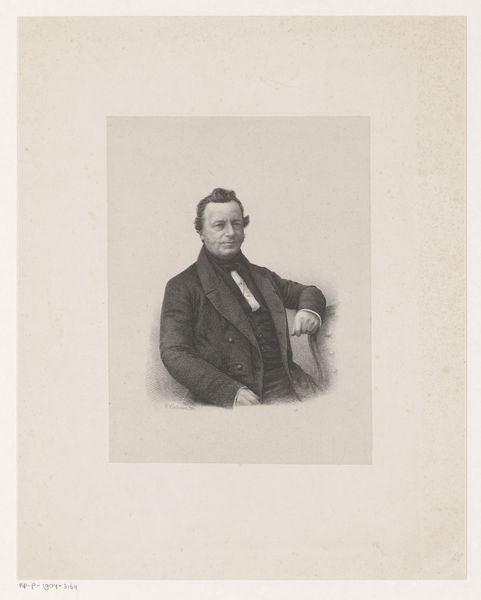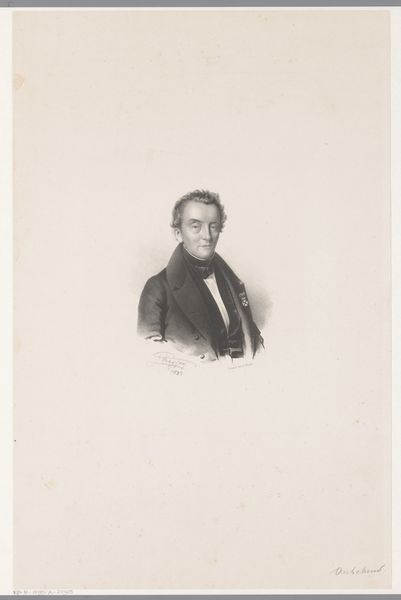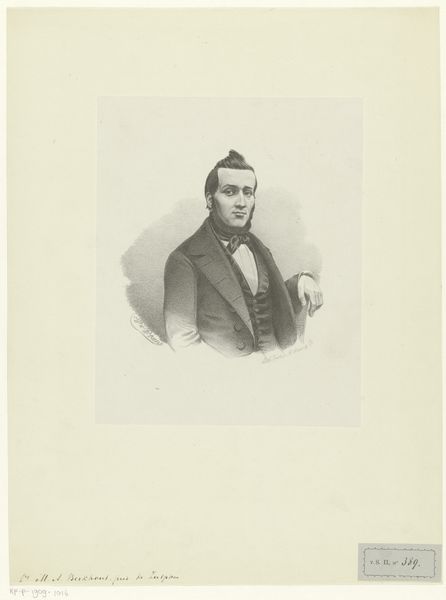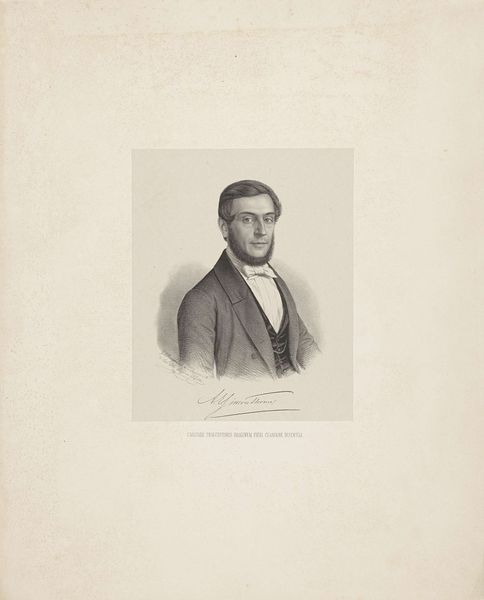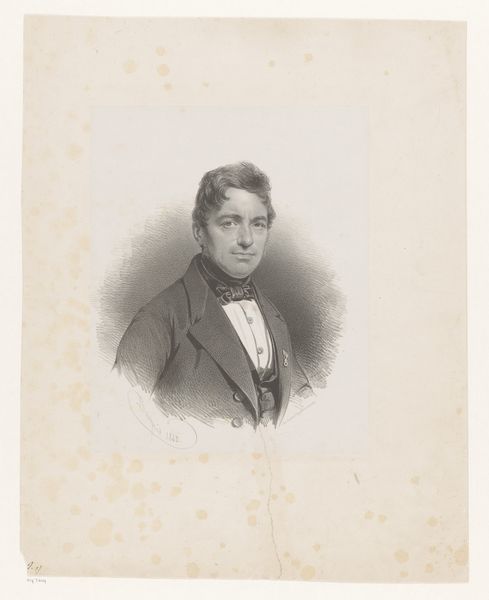
drawing, pencil, graphite
#
portrait
#
pencil drawn
#
drawing
#
16_19th-century
#
pencil sketch
#
pencil drawing
#
pencil
#
graphite
#
academic-art
#
realism
Dimensions: height 500 mm, width 330 mm
Copyright: Rijks Museum: Open Domain
Editor: Here we have an intriguing portrait, "Portret van een onbekende man," made between approximately 1851 and 1883 by Johan Hendrik Hoffmeister, created using pencil or graphite. The stern, almost imposing demeanor of the man really captures my attention. What strikes you most about this drawing? Curator: The anonymity is key here, isn't it? This drawing, like so many portraits of the era, reflects a particular middle-class aspiration. Think about the rise of photography during this period and how portraiture, both painted and drawn, became accessible to a broader public, solidifying social identities. Notice the details in his clothing: the precisely drawn bow tie, the jacket, the small medal – indicators of status and respectability carefully constructed and presented. Editor: That’s a good point about constructed identities. So the fact that we don't know who he is almost makes him *more* representative of that class. What do you make of the academic and realist styles influencing this work? Curator: Precisely! The realism is clear, of course - the intent is to capture a likeness, to record his presence. But the academic style implies an engagement with established artistic traditions and techniques. The artist is not simply creating a lifelike image; they are presenting it in a manner that conforms to recognized standards of skill and taste. Think about the art market at the time and how such portraits reinforced certain bourgeois values. Editor: That’s fascinating. I’d never considered the economic and social implications so explicitly. I suppose the real art here, beyond the pencil strokes, is constructing a particular persona for public consumption, and being accepted. Curator: Indeed. We might even consider this "unknown man" an early participant in the public relations game! I learned that you brought a very acute approach in pointing at this particular piece. Editor: And I better understand now how socio-historical contexts fundamentally shape art production and consumption. Thank you!
Comments
No comments
Be the first to comment and join the conversation on the ultimate creative platform.

